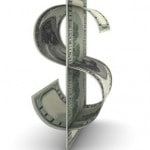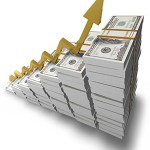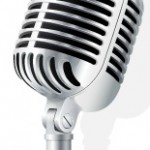Sirius XM Q1 Review – Solid Footing
 Sirius XM Satellite Radio (NASDAQ:SIRI) announced their Q1 2011 numbers today and so far the reaction by analysts and the street has been very positive. It is not that the company reported any stellar numbers that sent the equity higher, but rather that the company has demonstrated for yet another quarter that they are marching in the proper direction. The key element that seems to have the street excited from the equity perspective is that Sirius XM outlined in pretty strong language that a price hike is around the corner. With nearly 17 million self paying subscribers even a modest price hike of $1.00 per month would generate just over $50 million in added revenue per quarter for the company. This is not a number to take lightly.
Sirius XM Satellite Radio (NASDAQ:SIRI) announced their Q1 2011 numbers today and so far the reaction by analysts and the street has been very positive. It is not that the company reported any stellar numbers that sent the equity higher, but rather that the company has demonstrated for yet another quarter that they are marching in the proper direction. The key element that seems to have the street excited from the equity perspective is that Sirius XM outlined in pretty strong language that a price hike is around the corner. With nearly 17 million self paying subscribers even a modest price hike of $1.00 per month would generate just over $50 million in added revenue per quarter for the company. This is not a number to take lightly.
Overall the company numbers were in line with analyst expectations, or within striking distance. While ARPU and revenue lines may seem a bit light compared to what we were looking for, cost controls and other numbers were in line and all of the numbers pointed to Sirius XM meeting or beating the 2011 guidance outlined below:
- Full-year revenue of approximately $3 billion
- Adjusted EBITDA projection remains at approximately $715 million
- Full year self-pay churn and conversion rates for 2011 should be broadly similar to those seen in 2010
- NET new subscribers of 1.4 million in 2011
- Free cash flow (FCF) in 2011 should approach $350 million as compared to previous guidance for free cash flow approaching $300 million.
With the Q1 numbers proving that the guidance is indeed attainable, Sirius XM’s Mel Karmazin took things a step further. He sated that the subscriber guidance would be raised if not for the impacts of the disaster in Japan and then added another nugget of information for the street to digest. According to Karmazin, if the auto sector sees reduced production and sales that the current subscriber target would be met and EBITDA would be higher than guided. On the other hand, if production and sales climb, that EBITDA would be met and subscriber numbers much higher. In effect Karmazin painted a win/win situation for the street, indicating that one way or the other that some guidance will be exceeded by a healthy margin.
What I anticipate is that Sirius XM will be able to slowly march onward and upward as the year progresses. Here at SiriusBuzz we try to give readers an even-handed picture of what this company will do, not pipe dreams or irrational numbers based on pie in the sky numbers. Sirius XM is doing the same with their own guidance and the methodology of how they run their business. Some key items to watch:
OEM CHANNEL
This is where Sirius XM gets their bread and butter. They have deals in place across the board for installation of satellite radios into vehicles. Sirius XM is installed in about 60% to 65% of all cars produced for U.S. sale. The dynamics of this channel deliver subscriber in differing ways, and understanding this metric can be challenging if one is not careful. Bad assumptions can lead to investors arriving at very bad estimates. SiriusBuzz and iKickTires deliver timely, actionable pieces that break down the automotive channel in ways that are meaningful and accurate for investors.
Sirius XM saw the “Take Rate” (the percentage of promotional subscriptions that convert into self-paying subscriptions) slip slightly in Q1. Part of this may be due to the economic environment, part due to the mix of manufactures selling satellite radio equipped cars, and part due to new competitive options in new cars being sold. Sirius XM spoke to the mix as being the driver, but I think deeper analysis will point to a tougher competitive landscape in cars with smart phone connectivity, and perhaps pricing more-so than the company indicated. What SiriusBuzz readers know is that the mix of “Leading”, “Point-Of-Sale”, and “Trailing”, subscribers has not shifted that much, and in point of fact has shifted to the “Leading” category which includes makes like Ford and Chrysler. While Ford’s 6 month promotion and Chryslers 1 year promotion will shift take rates out for a period, the sales numbers of these cars has not moved substantially. Comparing to a year ago we are seeing the shift being only a point or two between categories. On the other hand the competitive landscape and economy are factors that need consideration, and certainly monitoring going forward. They are not big detractors as yet, but as time passes we will want to see if the trend continues for a lower take rate as the economy improves. This means that SIRI investors will want to monitor the success and failures in competing services like Pandora, Slacker, MOG, and iHeartRadio.
SUBSCRIBER NUMBERS
This is a very popular metric among investors and should remain so. If the company is adding subscribers they should be increasing revenue. It is as simple as that. Company guidance of 1.4 million NET subscribers this year is attainable no matter happens at this point (unless car sales suddenly cease). That being said, we are looking at Sirius XM only needing about 340,000 each quarter for the next three quarters to hit their guided number. This is also a category where Sirius XM investors need to step back and look at reality. Some investors were expecting subscriber additions of well over 1 million in Q1 alone. Simply stated there was absolutely no reasonable or rational path by which such a number could be obtained. It is as simple as that. With the equity trading higher those investors that were expecting that type of blow-out number are LUCKY today. Relying on luck to improve your portfolio is no way to have continued success in investing. While Sirius XM tends to be conservative in guidance, there is no way the company would be that conservative. Here at SiriusBuzz we build models that are grounded in reality and fair assumptions, not unrealistic guesses. In my opinion, and while still early for projections, it would be fair to say that Sirius XM can repeat their nearly 400,000 NET additions in each of the next 2 quarters (provided auto sales average 1 million per month), and add up to 600,000 in Q4 of this year. This would put the annual tally between 1.7 million and 1.8 million for the year, beating guidance.
AVERAGE REVENUE PER USER
Average Revenue Per User (ARPU) is an area that investors will want to watch closely going forward. The trend has been that this number is trickling downward. Part of that is attributable to the lowering of the royalty rate, but that does not account for all of the move. In general I think Sirius XM is seeing a slow-down on consumers upgrading to premium services like “Best Of” and “Internet” subscription add-ons. This quarter I felt that the company would have seen the Internet option being added more-so than it was. That additional $3.00 per month would help offset the $0.50 decline in in royalty rates. While it did help some, it was not enough to have the company avoid announcing another dip in this metric. It is anticipated that a price increase will go into effect sometime in Q3. This means we have Q2 numbers to see if the company was able to keep declining ARPU in check. If ARPU continues a decline, it can be an indicator as to the elasticity in Sirius XM ability to raise prices. Certainly the company does not want to price themselves out of growth, but it is a tricky slope, and in particular when consumers have more and more options. Use the Q2 ARPU metric to help yourself determine at what level a price increase will occur.
COST CONTROLS
Sirius XM has been masterful at controlling costs and improving the balance sheet. I look for this trend to continue. The company has little debt maturing this year, so cash can be hoarded or used to improve subsequent year models. Subscriber Acquisition Costs (SAC) came in at a reasonable $57. In my opinion the company has latitude here without negative impact. They can increase this line item by up to $5 without people looking at it as a negative. Such an increase will happen if there is a sharp run up in auto production.
FREE CASH FLOW And EBITDA
Sirius XM has a strong position in cash, and healthy EBITDA numbers. While the EBITDA growth of 15% is not the more lofty 20% or 25% Karmazin likes to deliver, it is still a healthy and respectable number. EBITDA growth by 20% in this economic environment is a challenge, and would be seen as a major coup. If Mel can continue EBITDA growth at 15% investors should be very happy. The Free Cash Flow (FCF) is also important and Mel is masterful at shifting between highlighting EBITDA and FCF as the metric to watch. Sirius XM also has healthy FCF. At the moment Karmazin is concentrating on Free Cash Flow, as it is the lone piece of guidance he raised. The company expects FCF to be at $350 million in 2011. With $110 million improvement already under their belt, this metric would appear to have some upward room to work with.
All in all Sirius XM reported strong and stable numbers with an outlook that is positive. They have broken down that wall at $2.00 and are using the rubble from that wall to construct a solid footing. Watch for some improved analyst opinions in the coming days.
Position – Long Sirius XM Radio





This is the big piece of the subscriber addition piece that is very promising. There are currently 1 million more trials out there than last year. thus at the current moment there are ~500K Subs waiting to turn to self pay. Couple that with even more cars being sold and there is a much stronger pool of subs coming our way for the near future.
From the conference call:
if you include unpaid trials, we finished the quarter with more than 4.8 million total subscriptions and trial, an increase of approximately one million from the prior year, reflecting the strong recovery displayed by the auto industry over the course of the last year. That’s one million more self-pay subs and one million more subscriptions andtrial than we had one year ago.
I would be very careful in counting subs early. The companies that offer unpaid trials have lower take rates than the longer term partners…perhaps as low as 40%. Frear should have never walked down that path IMO. It sets up bad expectations. The best policy is counting subs as they come, the way it was meant to be
I agree Spencer. We really never know until the numbers come out. However, the market in between calls is always forward looking. We can even undershoot and say 40% of the 1 million convert vs. the standard 44-46% convert rate. We still would come out to somewhere near ~400K subs out there currently that weren’t there last year. Obviously risks are associated with all of this but the fundamentals of churn have never dropped much, even in the worst of times.
I know you like to only report actual information but I can do that by reading press releases. Take some chances with Siri big guy, and give us something we can’t read in the morning paper.
You are looking at a delta of old information though. Frears comment related to year over year. Unpaid trials are something like 200K over last quarter which makes sense. That is why there is nothing there. people are trying to take a year over year number and massage it into an equation for this year going forward….ALWAYS a bad move.
I do take chances. I put my quarter estimates out there with sound and reasonable data to back up my opinion. I did a recap and pointed out things many do not consider.
I simply will not be irresponsible with what I write. Will I take chances? Yes, but I clearly spell it out with reasoning and data that make sense, not something trumped up to make people feel good.
By the way….
There are ALWAYS unpaid trial subs in the pipeline. If you consider a 60% installation rate and the fact that 1,000,000 cars came from my “trailing” category during the quarter, you have 600,000 unpaid trial subs from Q1 alone. This is nothing new, and has been going on for quite some time. Add in another month or two for marketing purposes and you get about 800,000 to 1 million. How people are just now understanding this when I have been reporting these numbers forever is beyond me. The flip side of that coin is the pull ahead subscribers we get from my “leading” category. Because this has been the situation for a long time now, I see no reason to even begin to count these. The company will get another 400K next quarter and again the third quarter.
I may be missing something but regardless of leading, pos, or trailing……they ended the year with 1 million more in all of those hoppers compared to last year at this time right?
“If you include unpaid trials, we finished the quarter with more than 4.8 million total subscriptions and trial, an increase of approximately one million from the prior year, reflecting the strong recovery displayed by the auto industry over the course of the last year. That’s one million more self-pay subs and one million more subscriptions and trial than we had one year ago”
The point is that they always have a ton of subs in the hopper. Last year was not a good year for OEM’s, so the hopper was filling up. If you follow the oem channel you were already aware of this. It is not really anything to get excited about. Right now we are seeing a couple of those OEM’s that deliver unpaid trials with production issues. That hopper is depleting at the moment, not filling up, because of the disaster in Japan.
The difference is that the auto sector is recovering now and the sub numbers appreciate because of that.
The unpaid trial or “trailing” category is what helps deliver subs four months after someone buys a car. The “leading category is delivering subs at production.
The company will still see 1.7 million deactivations next quarter, and probably about 2.1 to 2.2 million gross additions. That translates to 400 K to 500K subscriber additions next quarter. The same will hold true for Q3. Q4 should see an uptick because is usually does. I would say the company is on pace for 1.7 to 1.8 million additions this year. That is 300K to 400K above guidance, but it not solely due to the unpaid trials in the hopper.
With SAAR at 13 million there should always be about 1 million in the hopper. With SAAR at 14 million there should be 1.175 million in the hopper. At a SAAR of 14 million there should be 1.350 million in the hopper, and so on and so on.
essentially there is no surprise here at all.
Perhaps the best way to think of this is that the “trailing” category of subs offsets the “leading” category of what people term as “parking lot subs”.
In the end you might consider that there are about the same number of “Leading” cars with no-one listening as there are unpaid “Trailing” subs.
To make a big deal out of this now is three years to late. It has been happening since the merger.
The only glimmer in this is that it is indicative of a recovery in the auto sector, but again, we already knew that.
Frear should not have said what he said. There was no need for it.
hanni….
shoot me an email
[email protected]
Great article and priceless info…I wish you guys along with your readers can team up and light a fire under Sirius’s marketing butt. I like everything that is going on, but I have this nagging feeling we are leaving so much on the table.
I feel very strongly the company has yet to be properly marketed…Can’t we hire the marketing firm from Apple to simply and eloquently communicate the need, value and content this company offers. I do write to them on my own, but I’m sure that does not get very far.
Thanks again, Georgio
Georgio,,,,
They have heard the criticism…as yet they are not compelled to move….that will change soon i think
Spencer, you’ve turned a skeptic into a fan!
I’ve been Long on Siri but I got ahead of myself. I do still believe, this stock in $3 by Dec.
Not sure why you were a skeptic, but it is nice to have you on board as a fan
They dont have 110million in cashflow this quarter, they had negative 17, it was however a 110 million dollar swing to the positive.
Good catch….It was supposed to say “with a $110 improvement under their belt….”
Correction made